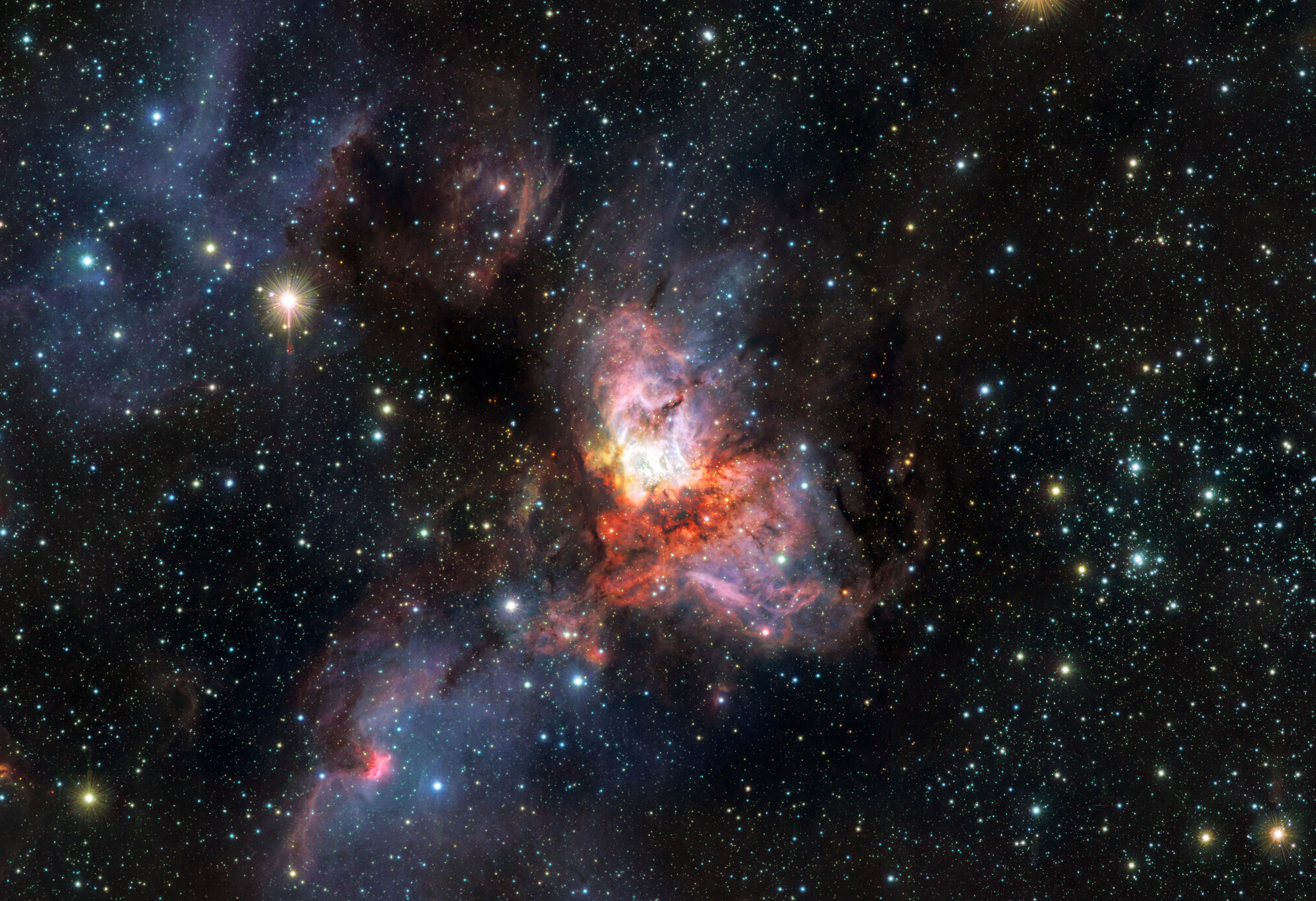The European Southern Observatory (ESO) has released a stunning 80 million-pixel image of the star cluster RCW 38, as captured by ESO’s Visible and Infrared Survey Telescope for Astronomy (VISTA), operating in Chile’s Atacama Desert.
Meet the colourful extravaganza of the RCW 38 stellar nursery, located some 5500 light-years away from us, in the constellation Vela. With its bright streaks and swirls, this birthplace of stars is not afraid to flaunt its colours. From the vivid pink of gas clouds to the multi-coloured dots, which are young stars, this image has it all.

Compared to our Sun, which at about 4.6 billion years old is in a stable phase of its life, the stars in RCW 38 are still very young. At less than a million years old, RCW 38 contains some 2000 stars, creating this psychedelic landscape. This young star cluster is bustling with activity, which makes it an interesting target for astronomers to observe.
Star clusters are like giant pressure cookers, containing all the ingredients for star formation: dense gas clouds and opaque clumps of cosmic dust. When this mixture of gas and dust collapses under its own gravity, a star is born.
The strong radiation coming from these newborn stars makes the gas that encompasses the star cluster glow brightly, creating the pink hues we see here in RCW 38. It’s truly a spectacular sight! Yet in visible light many stars in the RCW 38 cluster remain hidden from us, because dust blocks our view of them.

That is where the VISTA telescope, at ESO’s Paranal Observatory, comes in: its VIRCAM camera observes infrared light which, unlike visible light, can go through dust almost unimpeded, revealing the true riches of RCW 38. Suddenly, we also see young stars within dusty cocoons, or cold ‘failed’ stars known as brown dwarfs.
This infrared image was taken during the VISTA Variables in the Vía Láctea (VVV) survey, which has produced the most detailed infrared map of our home galaxy ever made. Surveys like this reveal as yet unknown astronomical objects, or give us a new view of known ones.
Since this image was taken, VISTA’s faithful VIRCAM camera, which has conducted numerous imaging surveys since 2008, has retired after an impressive run. Later this year, the telescope will receive a brand new instrument called 4MOST, which will gather the spectra of 2400 objects at once over a large area of the sky. As VISTA is born again, the future looks bright. (ESO)








You must be logged in to post a comment.